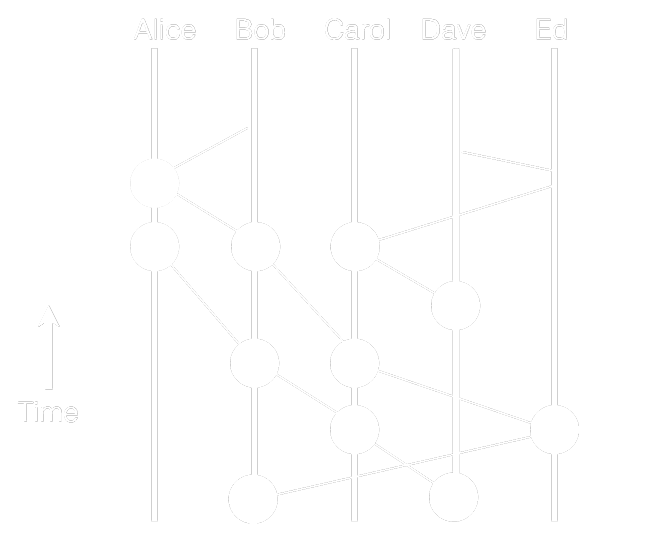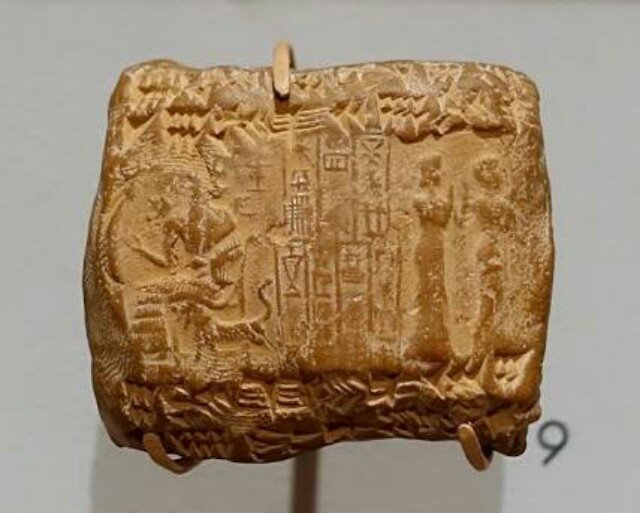
IJCH - Inside JaiChai's Head (meaning: My warped, personal opinions and musings)
From the Author
Salutations. I am JaiChai.
And if I haven't had the pleasure to make your acquaintance, it's always nice to meet a fellow Steemian.

Great Video & Introduction to HashGraph
Three days ago, my Steemian friend @nolnocluap posted Mike Maloney's newest video (#8) in his excellent "Hidden Secrets of Money" online video series.
Here's the post by @nolnocluap:
I recommend that everyone view this high quality, eye opening, and information packed video.
You'll instantly become a Mike Maloney fan.
View all the fascinating videos on his awesome website:
https://goldsilver.com/hidden-secrets/
Towards the end of the video, HashGraph is introduced and briefly discussed.
I must have watched that section over and over again - only because it sounded too good to be true.
Then my skeptical, OCD self forced me to immediately go on a 60+ hours, HashGraph speed-learning trip.
It was exhausting, but very exciting. I learned a lot. And this article is based on that learning.
As the title suggests, I will not dig too deeply into the technical details. Those topics will be presented in future posts.

The goal of this article is to give you the key aspects that sets HashGraph apart from the rest of the major players in the decentralized platform arena.
In other words, only the "wow factors" or "game changers" - the reason for all the huge interest and excitement currently happening in the cryptocurrency and blockchain space - will be covered.
And after reading this post, I suspect that you (like me) will be keeping a keen eye on HashGraph.
Note:
Don't worry if you're not an algorithm guru or blockchain coder extraordinaire. Prior knowledge of complicated consensus mechanisms is not necessary.
As usual - and as best as I can, I will explain things in plain language; simple enough for almost anyone to understand.
So, with that in mind, let's charge on...

HashGraph is an algorithm from a very small, very new company called Swirlds, Inc.

Gossip About Gossip Protocol - UnGodly Speed!
"With barely 7-12 transactions per second (tps) - in the most optimum conditions, Bitcoin and Ethereum are tortoises compared to other platforms.
Several platforms - even credit cards - can process many more transactions per second; and in some cases, achieving thousands of tps.
Even PayPal averages 120 tps; while VISA averages 1,500-2,000 tps and supposedly has a max peak load capacity of 56,000 tps."
(The above is from my previous post: https://steemit.com/blockchain/@jaichai/ijch-the-many-faces-of-scalability)
HashGraph boasts 250,000 transactions per second!
This blazing speed is achieved by taking the well established, robust and highly effective computer protocol called "Gossip Protocol" - a method of broadcasting information in the same manner that office gossip or a virus spreads, and then adding two tiny bits of information (in the form of hashes).
The Gossip Protocol and additional hashes enable HashGraph to do everything a blockchain can do without the blockchain - and its inherent speed limitations.
Stated differently, in HashGraph, instead of the original "Gossip Protocol", the "Gossip About Gossip Protocol" is implemented; drastically improving performance.
Simply Brilliant.

The creator of the "Gossip About Gossip Protocol" is a man named Leemon Baird, Co-Founder and CTO of Swirlds, Inc.
Among many academic, business and professional achievements, he also holds the record for the fastest PhD in Computer Science ever to be earned from Carnegie Mellon. He did it in 2 1/2 years!

Voting w/o the Voting - Consensus w/o the Bandwidth
Although voting systems are the most egalitarian way to reach consensus, and voting algorithms have been around for over three decades, they were too impractical to be widely deployed in the real world.
The legacy voting system requires redundant, multiple steps; not to mention the inordinate time needed to complete each of those steps.
The heaps of bulky data that had to be sent and returned by each node before each round of voting could be accomplished gobbled up enormous bandwidth.
And for instances when voting resulted in a tie, more rounds were required to reach consensus!
So, for thirty years, these voting systems and algorithms were shelved...until Leemon Baird came along and made them useable for real life operations.
How did Leemon Baird do this?
By incorporating a voting mechanism in a way that allows HashGraph to get all the benefits of consensus via voting - without the voting!
HashGraph performs "virtual voting".
It is based on a voting algorithm that mathematically proves how each node would have voted; thereby, making it unnecessary to actually go through all the bandwidth eating steps mentioned before.
Again, simply brilliant!

Bank Grade Security - The Gold Standard
"...Byzantine fault tolerance (BFT) has become the gold standard for security in distributed systems. As the name suggest, Byzantine fault tolerance means that a system can tolerate (i.e. still achieve consensus in the presence of) Byzantine faults - the category of faults where nodes may be malicious."
http://www.information-age.com/gold-standard-security-distributed-systems-like-blockchain-123469395/
An algorithm is said to be "BFT" if it always leads to a moment in time where all participants reach consensus, know when that consensus has been reached, and they are never wrong.
Contrary to popular belief, Bitcoin's PoW algorithm is not BFT. It's rounds of confirmations build towards, but never reaches 100% consensus - and may still not be correct.
Hashgraph is the only "Bank-Grade" consensus algorithm because it possesses mathematical proof of asynchronous Byzantine fault tolerance (BFT).
It is resistant to DDoS attacks, network partitions, sybil attacks and firewall/virus campaigns.

Goliath Slayer
Earlier this year, in a modern day version of "David and Goliath", Swirlds, Inc. - an obscure, tiny Distributed Ledger Platform company of only six employees, competed against the likes of IBM to secure a contract to build a distributed ledger platform for the whole U.S. Credit Union industry.
IBM showcased its impressive "HyperLedger Fabric" that processes 700 transactions per second.
Enter Swirlds with their proposal based on HashGraph.
Surprising everyone (except maybe Swirlds), the huge contract was awarded to the HashGraph ledger model from Swirlds, Inc.
The end result was the formation of CULedger:
http://www.cutimes.com/2016/08/03/cu-ledger-could-save-costs-enhance-banking

Challenges and Clues
HashGraph has already proven successful in "permissioned" networks - where all nodes are known beforehand, but has yet to be deployed in a "non-permissioned" setting; such as public distributed ledgers like Bitcoin and Ethereum.
More about "non-permissioned" vs. "permissioned" network challenges are found in my previous article:
https://steemit.com/blockchain/@jaichai/ijch-the-many-faces-of-scalability
Recent "hints" (clues) on various social media, have many pundits speculating that Swirlds, Inc. will soon be announcing their plans for adapting to the "non-permissioned" networks setting - possibly through sharding.
Other potential Swirlds, Inc. news could include a monetization strategy - possibly incentivizing through PoB/PoSt (a term I coined meaning: Proof of Bandwidth and Proof of Storage), and an alternative to an ICO (airdrop?).

Impressions
The HashGraph innovations discussed in this primer is just the tip of the iceberg.
HashGraph's architecture yields many more advancements in the Distributed Ledger domain.
Stay tuned for further, in depth articles about this promising technology.
By JaiChai


Thank you so much for stopping by. And if you enjoyed my post, kindly Upvote, Follow, Comment and Resteem.

About the Author
JaiChai has been in the Disruptive Technology, Computer Science and Cryptocurrency spaces for many years. He is an enigma, regarded by his cohorts as sarcastic, funny, intuitive, but most of all - elusive. He’s known for randomly submitting philosophical and contrarian posts on several diverse forums.
When asked about his vanishing acts, he says, "I’m just somebody who enjoys being nobody because I look like everybody. Besides, time checking things off my 'bucket list’ - sans notoriety - is time well spent.”


Hello JaiChai and Saludos! It is a pleasure to continue to make your acquaintance. I am already happy that I followed you, as you have a really great style of article talking about tech.
I have a few suggestions, I hope you'll take them with an open mind, of course these are just my two cents.
You can use > symbol to do a block quote. Above, when quoting from your previous article, the quotations with italics didn't quite do it for me, wasn't different enough to distinguish that text visually.
Due to the vertical nature of these articles (unless we start using div tags with pull-left or pull-right) I prefer to see the images after what I am reading about. When I get to your images, I say, 'What does this have to do with anything?', then I keep reading and eventually, or quickly, based on your section heading, understand, but by then the image is fading out of sight!
Keep up the great work. I'm not going to read your article about crypterium until I've finished mine ;p
Downvoting a post can decrease pending rewards and make it less visible. Common reasons:
Submit
@ecoinstant,
Thanks a lot.
I'll try those suggestions soon.
To be honest I am still a <4 month newbie at markdown stuff. BTW, is there an end symbol after a ">"?
Namaste,
JaiChai
Downvoting a post can decrease pending rewards and make it less visible. Common reasons:
Submit
!!
My pleasure! There is no end symbol for the >, you just have to double return. A single line space will continue the quote.
Namaste :)
PS I am still learning too!
Downvoting a post can decrease pending rewards and make it less visible. Common reasons:
Submit
I passionately admire this article. I'm always curious about learning new things and this has made my day
Downvoting a post can decrease pending rewards and make it less visible. Common reasons:
Submit
@vic-essien,
Thanks for visiting and commenting with those very kind words.
Upvoted and following you now.
Namaste,
JaiChai
Downvoting a post can decrease pending rewards and make it less visible. Common reasons:
Submit
Interesting. Early days, but maybe this will replace the blockchain.
Downvoting a post can decrease pending rewards and make it less visible. Common reasons:
Submit
Excellent article. I had seen HashGraph but didn't jump to research it. Thanks to you it went really high in my priorities. Keep writing on the topic. Excellent job :-)
Downvoting a post can decrease pending rewards and make it less visible. Common reasons:
Submit
@vimukthi,
The next post "Generations of Decentralization" is my way of crudely comparing technologies (apologize for the level of explanation, but I'm trying to appeal to the most Steemians as possible).
Namaste, my friend.
JaiChai
Downvoting a post can decrease pending rewards and make it less visible. Common reasons:
Submit
interesting topic, but what about the bankers, this is just one company, could be bought up by Wall Street and then they hold all the coins/shares/capital etc?
We need libertarians in order to get rid of the old rulers...
Downvoting a post can decrease pending rewards and make it less visible. Common reasons:
Submit
@freeforever,
I applaud Crypterium for being first to market - with a GIANT bull's eye for the banking elite painted right on their forehead!
At least they paved the way, no?
As for HashGraph, copycats are definitely inbound.
And who knows? Maybe current DAG algorithms may get hip and modify.
Thanks for stopping by and commenting.
Namaste,
JaiChai
Downvoting a post can decrease pending rewards and make it less visible. Common reasons:
Submit
This is the reason I prefer a DAO like Dash. They are fully decentralized and has over 10 million USD self-funded budget per month. For an investment I'd actually prefer PIVX for being mostly a PoS rip-off of Dash with Zerocoin privacy. It's still too tiny for what it should worth.
Downvoting a post can decrease pending rewards and make it less visible. Common reasons:
Submit
Great post! Hashgraph is a truly revolutionary technology. Have you had a the chance to check out the recent changes made to their website? It looks like there is an announcement coming out soon.
Downvoting a post can decrease pending rewards and make it less visible. Common reasons:
Submit
@gossipguy,
Thanks for visiting and commenting.
It's about time for them to roll out their public, non- permissioned network version.
I wonder if their previous TPS benchmarks can remain super-fast in that Byzantine environment?
Thanks for the info.
Namaste,
JaiChai
Downvoting a post can decrease pending rewards and make it less visible. Common reasons:
Submit
Something about Hashgraph caught my eye a month or two ago. I'm no Crypto expert but I do see the benefits and I'm excited to see just how far this may go.
Bitcoin may be the first... similar to the Wright Brother's flyer... But Hashgraph could be like jumping to the 747!
Downvoting a post can decrease pending rewards and make it less visible. Common reasons:
Submit
@mikeonfire,
Thank you so much for visiting and commenting.
And "expert" is a relative term.
As far as I and my Steemian friend @vimukthi are concerned, all Steemians are light years ahead of the general population.
Hell, over 98% of the people in the world still haven't heard of Bitcoin!
Upvoted your comment and following.
Namaste,
JaiChai
Downvoting a post can decrease pending rewards and make it less visible. Common reasons:
Submit
good post @bijoy123
Downvoting a post can decrease pending rewards and make it less visible. Common reasons:
Submit
@originalworks
Downvoting a post can decrease pending rewards and make it less visible. Common reasons:
Submit
The @OriginalWorks bot has determined this post by @jaichai to be original material and upvoted it!
To call @OriginalWorks, simply reply to any post with @originalworks or !originalworks in your message!
Downvoting a post can decrease pending rewards and make it less visible. Common reasons:
Submit